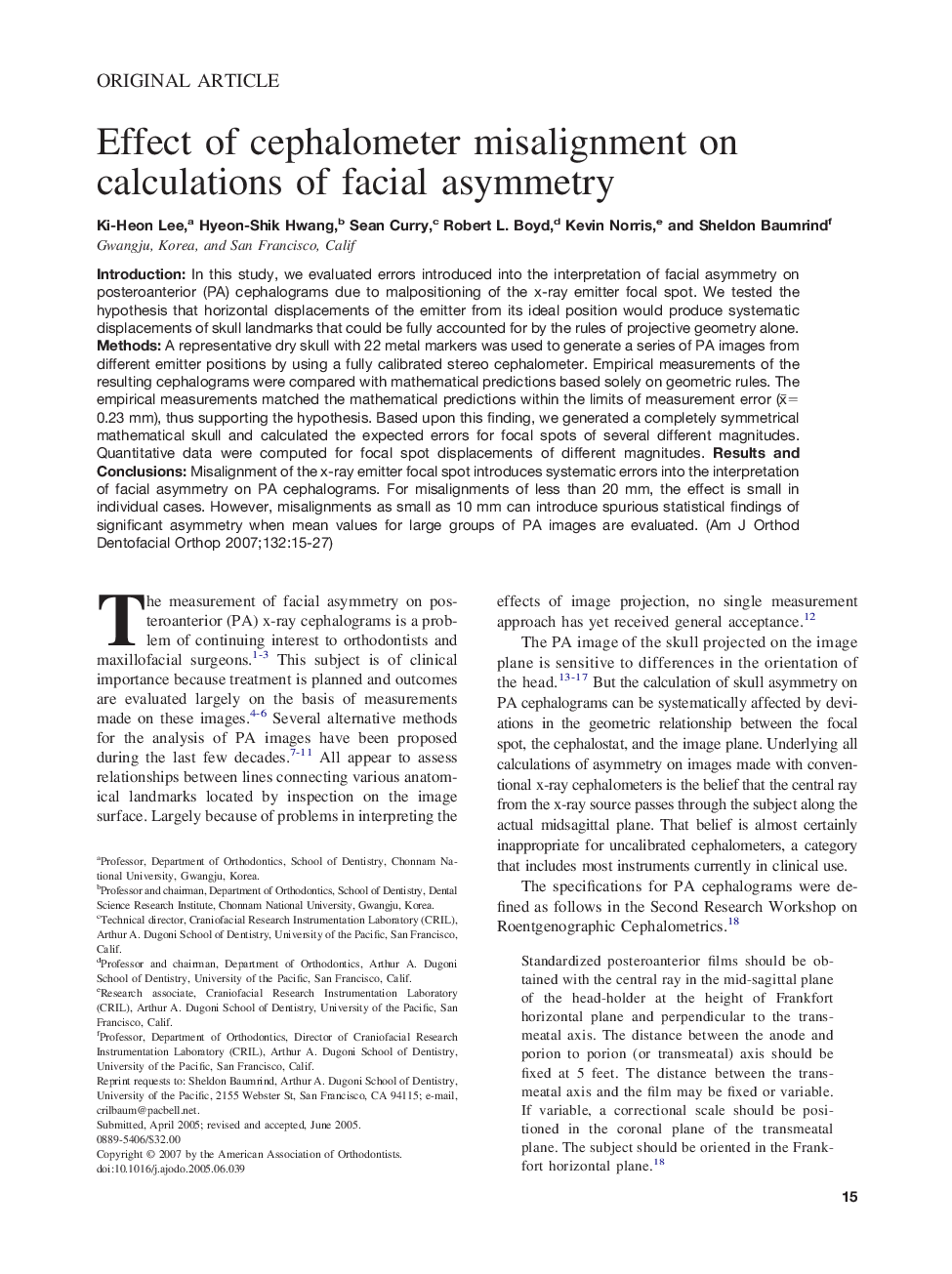| Article ID | Journal | Published Year | Pages | File Type |
|---|---|---|---|---|
| 3118563 | American Journal of Orthodontics and Dentofacial Orthopedics | 2007 | 13 Pages |
Introduction: In this study, we evaluated errors introduced into the interpretation of facial asymmetry on posteroanterior (PA) cephalograms due to malpositioning of the x-ray emitter focal spot. We tested the hypothesis that horizontal displacements of the emitter from its ideal position would produce systematic displacements of skull landmarks that could be fully accounted for by the rules of projective geometry alone. Methods: A representative dry skull with 22 metal markers was used to generate a series of PA images from different emitter positions by using a fully calibrated stereo cephalometer. Empirical measurements of the resulting cephalograms were compared with mathematical predictions based solely on geometric rules. The empirical measurements matched the mathematical predictions within the limits of measurement error (x̄= 0.23 mm), thus supporting the hypothesis. Based upon this finding, we generated a completely symmetrical mathematical skull and calculated the expected errors for focal spots of several different magnitudes. Quantitative data were computed for focal spot displacements of different magnitudes. Results and Conclusions: Misalignment of the x-ray emitter focal spot introduces systematic errors into the interpretation of facial asymmetry on PA cephalograms. For misalignments of less than 20 mm, the effect is small in individual cases. However, misalignments as small as 10 mm can introduce spurious statistical findings of significant asymmetry when mean values for large groups of PA images are evaluated.
